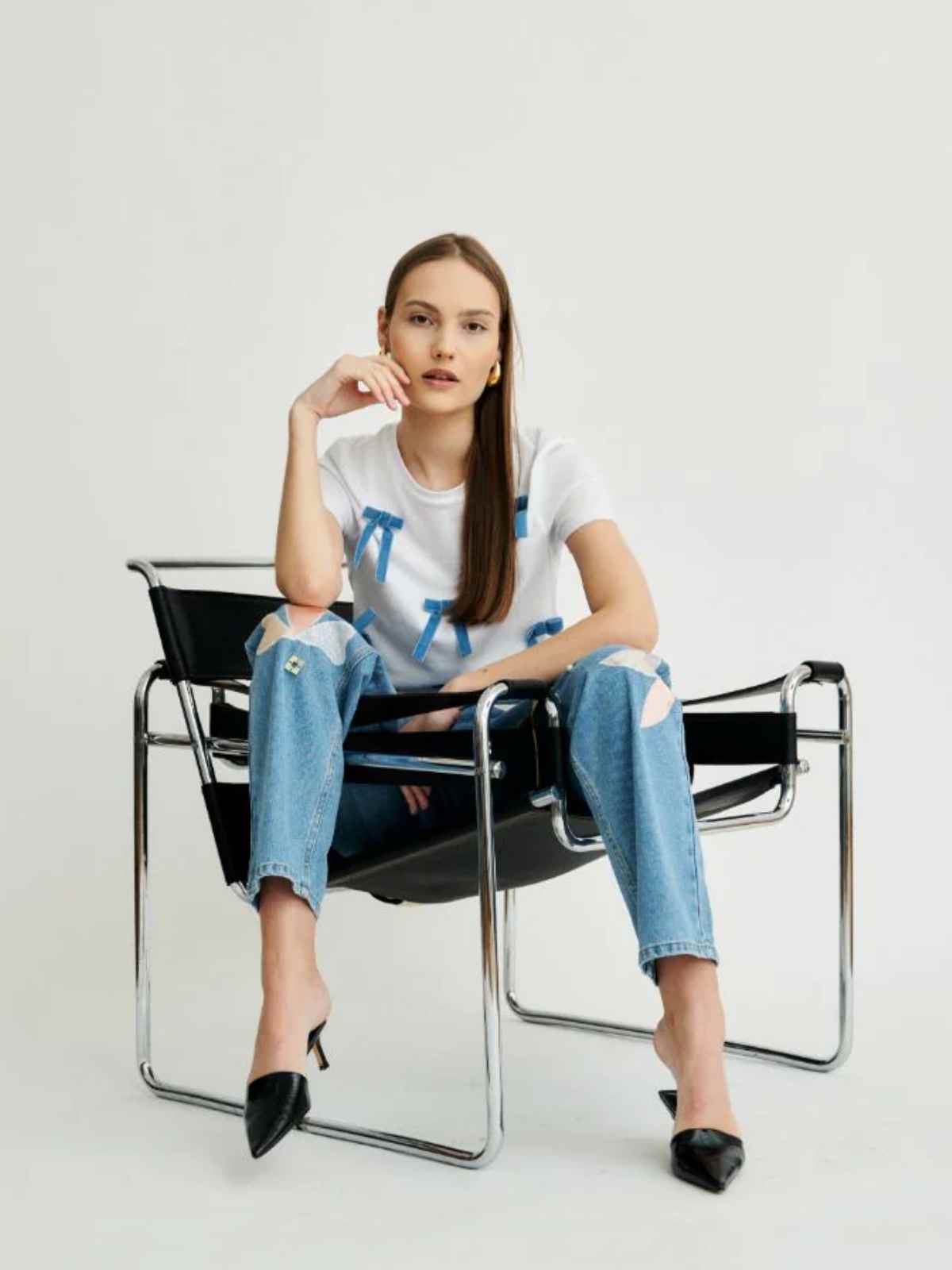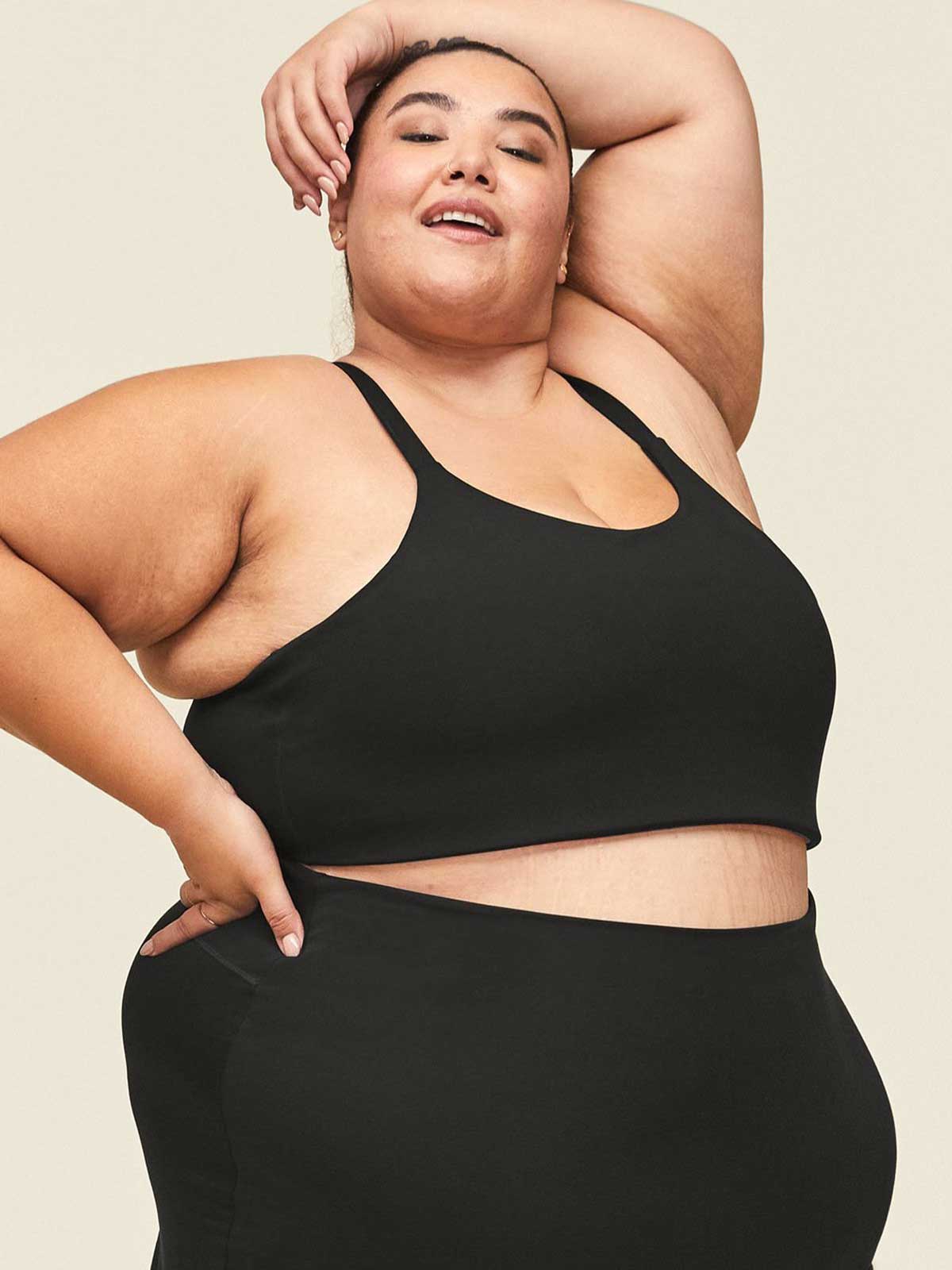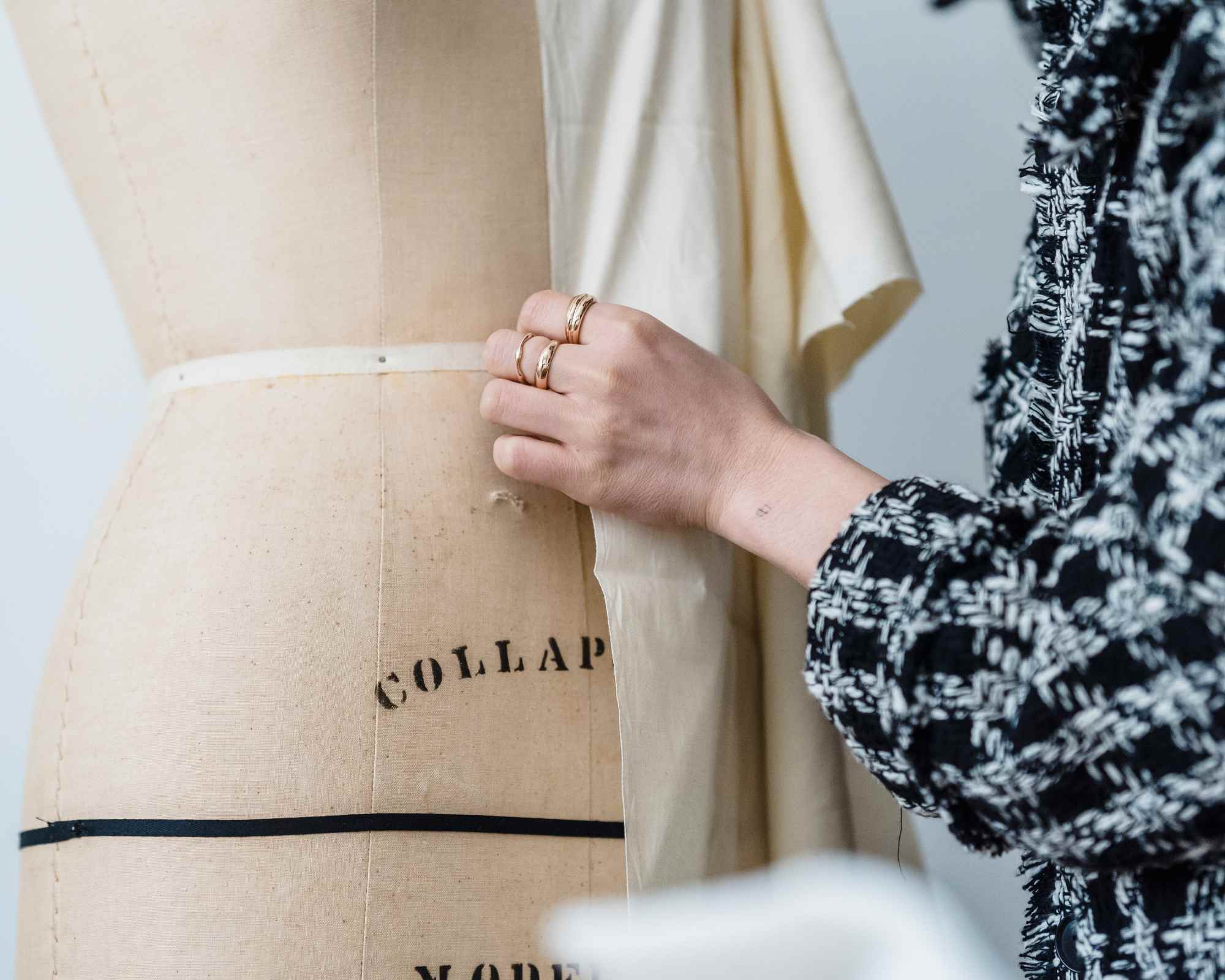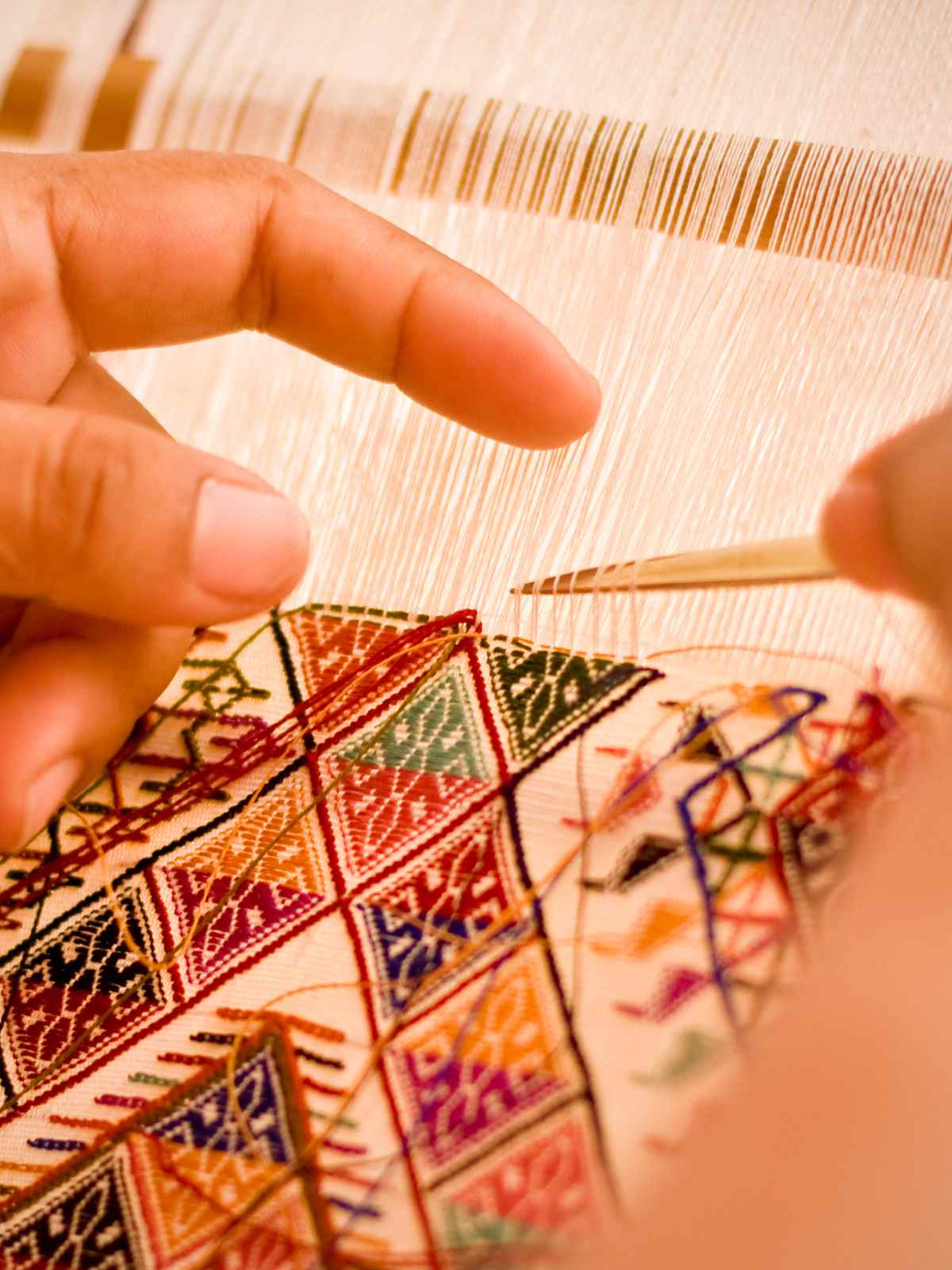Lots of brands are working to improve their sustainability and transparency, but with so many areas to address, it can be hard to know what issues to prioritise, how much to disclose to consumers, and how to communicate in the clearest way. In this guide for small brands, we’re sharing answers to the most common questions we’ve heard over a decade of helping brands improve.
How we’re helping brands to do better
Consumers increasingly value sustainability and expect brands to provide information about their sustainability practices, and on top of that, they’re becoming ever more aware of greenwashing. It can be challenging for small business owners, in particular, who worry they’ll say or do the “wrong” thing and be accused of greenwashing. But not saying anything for fear of being called out isn’t the answer, and it’s why we’re publishing this guide to help brands improve their communications and actions.
We’ve collated advice from our sustainability experts and insights from rating more than 6,000 brands over a decade, including the sustainability issues where brands most commonly fail to meet consumer expectations.
This guide offers tips for brands on how to better communicate their current initiatives and identifies actions they can take to improve their sustainability performance. It is not a comprehensive guide to every sustainability issue that is important for fashion brands. Rather, drawing on Good On You’s extensive experience assessing brand sustainability, it highlights common areas where brands can do better.
Table of contents |
About Good On You brand ratings
Good On You is the world’s most comprehensive source of trusted sustainability ratings for fashion and beauty. We list more than 6,000 brands on our app and directory, which millions of shoppers use to make more sustainable choices.
Each brand listing provides users with a sustainability rating and information about the brand’s impact across three rating pillars: labour conditions, environmental impact, and animal welfare.
Good On You’s ratings are based on hundreds of data points representing industry consensus on the most material indicators of sustainability. We only consider publicly available data, which is sourced from brands’ own reporting as well as third-party certifications and standards. The sustainability indicators applied vary according to brand size. Larger brands are expected to address a wider range of issues and publish more detailed information as they have a greater impact and often have a greater capacity to control or influence their supply chain.
For more details on our methodology, please see our How We Rate guide.
Who is this guide for?
This guide is designed for small and medium-sized brands (ie with a turnover of less than $50M/€50M; classified in line with the European Commission’s definition of small and medium-sized enterprises (SMEs)).
Many brands that approach Good On You to be listed as a sustainable brand find that their rating is lower than expected. There are two main reasons:
- The brand has not publicly disclosed important details about its sustainability practices.
- The brand has addressed some sustainability issues, but its performance falls short of the minimum required for a “Good” rating.
With this guide, brands can identify areas where they could better disclose information and better address sustainability issues.
The guide does not cover all of the criteria included in Good On You’s rating methodology. Instead, it identifies the most common areas where brands can improve based on our experience with more than 6,000 brand assessments.
A note for consumers
While much of this guide is written for brands and sustainability professionals who want to improve their communication and actions, it can also serve as a pointer for consumers looking to hold brands accountable for their impact and understand what good sustainability communications and actions look like. You may also find this article helpful on what to look for in sustainability reports.
General principles of disclosure
When disclosing your sustainability practices, it’s important to be:
- Comprehensive: fully address every issue, even the ones where you are lacking.
- Specific: be precise about the sustainability measures you have implemented.
- Material: focus on the issues that have the highest impact, usually in your core supply chain. Report on energy usage in your factories rather than the use of green energy in your office.
- Current: what you are doing now is more important than your future commitments. Future targets are relevant if sufficiently specific and time-bound but are given much less weight in our ratings.
Environmental impact
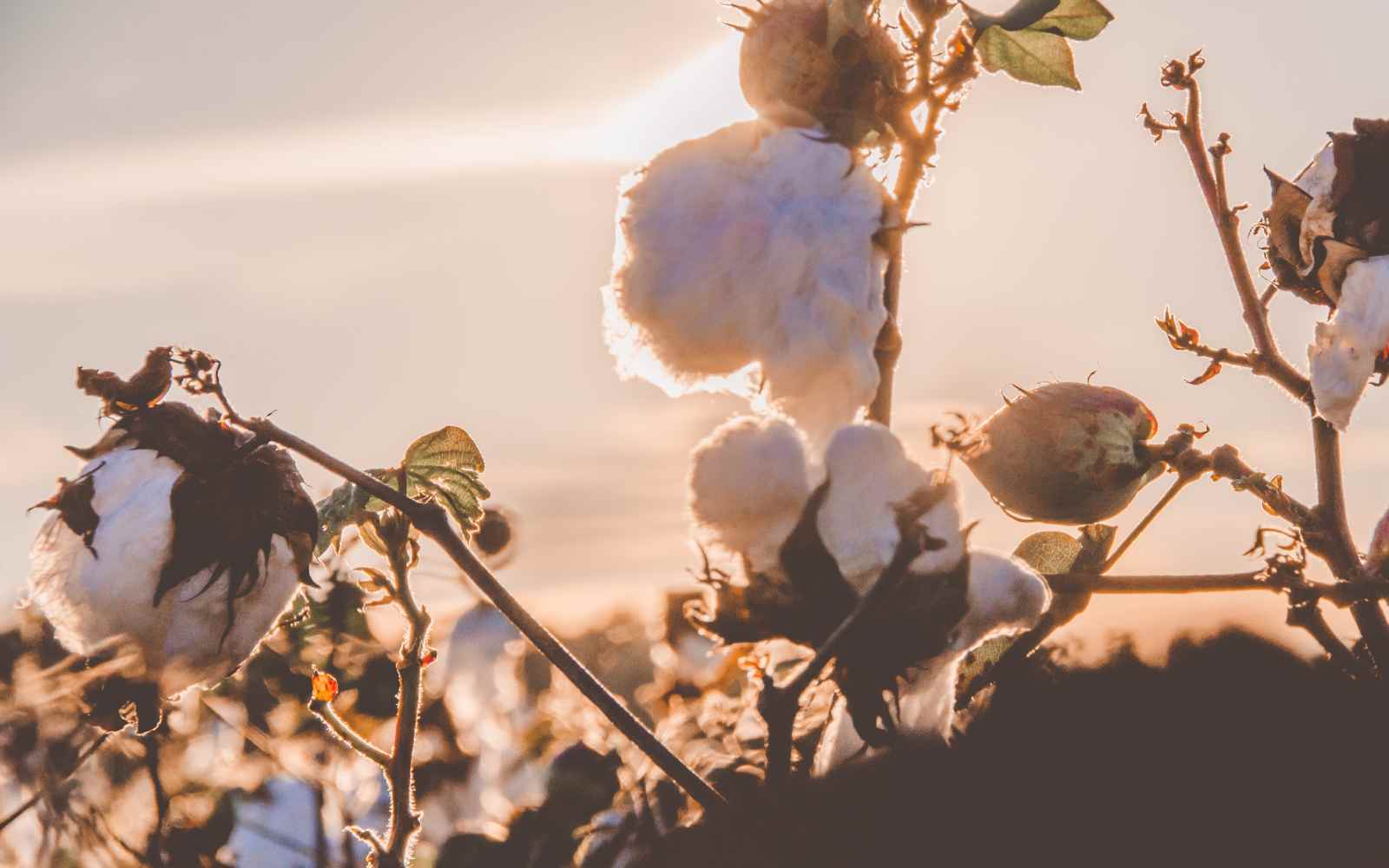
Our environmental impact rating pillar encompasses issues like chemical and wastewater management, material use, deforestation, emissions, and more. Here are some of the most common issues for brands to consider.
Jump to an issue: Material use; climate change; chemicals; waste; water; microplastics.
Material use
The materials your brand uses are a key driver of your environmental performance. Material choices are responsible for much of your brand’s impact on resource use, climate change, water, and chemicals.
Common issue: Have you fully disclosed all materials used? It’s important to be precise about which materials you use.
Tip: Your brand should disclose full details of the materials used in each product. Best practice is to state the material breakdown on each product page and provide a summary of the approximate percentage of each material used across your entire range. For example, state that across the range, approximately 30% of the materials used are organic cotton, 20% are recycled polyester, 10% are Tencel Lyocell, and the rest conventional cotton.
Skip to the appendix for a list of materials recognised by Good On You as lower impact.
Common issue: Have you demonstrated the benefits of any emerging lower impact materials you use?
Emerging materials might come with claims of environmental benefits but on further investigation may not be as impactful as first suggested. For instance, some bio-based leathers contain synthetic polymers, which have negative environmental impacts.
Tip: If you use a new material with environmental benefit claims then provide as much information as possible about the impacts of the material, and ideally include an independent assessment—preferably based on a full Life Cycle Analysis (LCA). For example, if you use biodegradable nylon, compare its benefits to recycled nylon across multiple environmental impacts including emissions, water use, chemicals, as well as biodegradability.
Climate change
The fashion industry is a major contributor to global greenhouse gas emissions, and Good On You rewards brands that have effective initiatives in place to reduce emissions in their supply chains.
Common issue: Have you identified the most effective way to reduce your emissions?
Brands will sometimes take small, symbolic steps to reduce emissions, for instance, by switching to more sustainable light bulbs in their head office, or choosing to offset their emissions rather than identifying and addressing the emissions reduction activities that will have the most impact.
Tip: Focus on the emissions hotspots in your supply chain, first and foremost. Ways to meaningfully reduce your emissions include: choosing materials that involve lower emissions compared to conventional materials; manufacturing locally; manufacturing by hand; shipping by sea; selecting suppliers that use renewable energy or implement more energy-efficient technology in the manufacturing process. Talk to your suppliers, as they may already be reducing their emissions in some of these ways.
Tip: Put your effort into reducing your emissions as much as possible before you offset them. If you do choose to offset your emissions, ensure that you use a credible, preferably Gold Standard, offset provider.
Chemicals
Pollution from hazardous chemicals is a critical environmental concern, and chemical usage is a challenging area to change quickly.
Common issue: Have you fully reported your chemical impacts?
Many brands do not address the impacts of the chemicals used in the production of their products. Stating that the brand is compliant with OEKO-TEX Standard 100 or the mandatory EU REACH scheme does not adequately address the impact of hazardous chemicals on the environment.
Tip: Talk to your suppliers to find out if they are already working with certifications such as ZDHC, MADE IN GREEN by OEKO-TEX*, or bluesign, or they may be willing to get certified. If not, ask them to fully disclose the chemicals they use and comply with a mandatory restricted substances list. Alternatively, you may need to work with your suppliers to attain relevant certifications, or consider changing suppliers.
Another way you could reduce chemical harm is by using fabrics that are certified by a scheme like GOTS or GRS, which require suppliers to avoid more hazardous chemicals. You could also consider using natural dyes.
*Note: It’s common to conflate two different standards from OEKO-TEX. MADE IN GREEN by OEKO-TEX (based on STeP) addresses a wide range of chemicals’ environmental impacts, where the OEKO-TEX Standard 100 does not.
Waste
Even without the accelerating impact of fast fashion, valuable resources are frequently wasted in the business-as-usual fashion industry. Circular business models promote reuse, repair, and recycling with the intention to move towards a closed-loop system to minimise resource use, emissions and waste. Small brands can often have a big impact in this area.
Common issue: How do you reduce pre-consumer waste?
Tip: Reduce waste in the production process by reusing offcuts, using low-waste cutting techniques, or both. Consider alternative business models to minimise textile waste such as rental, made-to-order, or limited production runs.
Tip: Consider making your products easier to reuse, recycle, or even compost. You could also make your products long-lasting, supported with a multi-year guarantee, or, if you have the required distribution footprint, you could offer free repairs. Another option is to implement a take-back scheme where used products from your brand can be upcycled into new ones.
Water
The fashion industry uses large amounts of water to create fibres and process them into textiles and finished products. With fashion supply chains often located in some of the most water-stressed regions in the world, it is essential that brands reduce water use in their products.
Common issue: How do you reduce water consumption?
Tip: Focus on the stages of production that use the most water, usually the primary (raw materials) and secondary (dyehouses) stages of production. Consider materials that require less water use to produce, such as organic hemp or organic linen. Work with your suppliers to see if there are options for them to minimise their water use, for example, by adopting rainwater capture or closed-loop systems.
Microplastics
Evidence continues to emerge about the impact of microplastics pollution. Most synthetic fabrics, including alternative recycled ones like Econyl, will still shed microfibres (a type of microplastic), particularly during machine washing.
Common issue: Do you address synthetic materials shedding microfibres?
Tip: If any of your products are made from synthetics, consider the ways that you can support end consumers to minimise microfibre shedding: (a) help them to understand the issue; (b) include relevant advice in your care instructions; and (c) recommend and make suitable filters available. Consider, for example, the advice we provide to consumers in this article. As microplastics are a newer sustainability focus, listen to the advice of key industry players, such as the Microfibre Consortium.
Labour conditions

In Good On You’s labour conditions rating pillar, we consider issues like supply chain risk, codes of conduct, living wages and financial security, policies for avoiding modern slavery, and more. Supply chain disclosure is one of the most common areas where brands have questions, and you’ll find insights on best practices in this section.
Jump to an issue: Labour rights policies; traceability; monitoring and assurance; living wage; worker support projects.
Labour rights policies
It is important for brands to ensure that they identify and promote good labour practices and policies throughout their supply chain.
Common Issue: Do you identify the labour standards you and your customers expect?
Tip: First, identify and document the standard that you expect from your suppliers (or your own business if you manufacture in-house). These expectations should address all the International Labour Organisation labour rights, including no child or forced labour, appropriate working hours, paid annual leave, maternity leave, the right to collectively bargain, and the elimination of discrimination.
Common issue: Do you communicate those standards to your suppliers and customers?
Tip: Communicate your expectations to your suppliers by adopting an industry-standard Code of Conduct, such as the ETI Base Code. If a Code of Conduct is not practical (ie if the products are made in-house solely by the brand owner), you could draft and publish a Statement of Expectations that you will hold your suppliers accountable to. Ideally, you should also address additional areas of labour rights concern above and beyond those in the ETI Base Code, especially any labour rights risks that are common to your specific business model. It is also best practice to describe how you have ensured that your suppliers are held accountable to the standards you have set.
Common issue: Do you report the good labour practices you take for granted?
Brands that manufacture in-house often assume that it is obvious to customers that they are treating their internal staff well.
Tip: You still need to describe your expectations and the policies that you apply, even for a very small business. If the owners are the only workers, then make this clear. The use of interns is also an issue that should be addressed, as they are commonly exploited in both small and large fashion companies.
Traceability
To manage impacts in your supply chain, you need to know where your products are coming from and who is making them.
Common issue: Do you report the extent you are able to trace your supply chain?
Tip: Make it clear how far into your supply chain you can trace. Ideally, you should be able to specify who dyes the fabrics and where the raw materials are grown. Many brands stop at the cut-make-trim stage when thinking about labour rights, but better practice is to be aware of what goes on earlier in the production process. One approach is to adopt certifications such as Fairtrade Cotton and/or the Global Organic Textile Standard (GOTS).
Common issue: Do you report the locations of your suppliers? Consumers have a right to know where their products are made.
Tip: As a minimum expectation, clearly state the country in which your suppliers are located. Best practice is the supplier name and/or address for all suppliers, along with additional comprehensive information (such as numbers of workers in each facility, the breakdown of male and female workers). We consider this information for the final, second, and primary production stages. Consider reporting your suppliers to the Open Supply Hub (formerly Open Apparel Registry), too.
Some brands are reluctant to disclose a hard-found supplier for fear of competitors poaching them, but this is not a valid reason for lack of disclosure. In this case, brands could consider omitting the supplier’s name but still disclose the address.
Note that if your suppliers are located in higher-risk countries, it does not inherently mean that there are human rights abuses, just as a supplier located in a lower-risk country does not inherently mean it is free from labour rights abuses. What is important in all cases, is how labour rights are monitored and assured (see below Monitoring and assurance).
Monitoring and assurance
It’s important that brands ensure their suppliers treat workers fairly, and therefore, you have a duty to conduct sufficient monitoring and assurance to guarantee that your suppliers comply with the standards you have set.
Assurance can come from relevant labour certifications, third-party audits, strong supplier relationships, and strong engagement with labour unions.
Common issue: How do you ensure your suppliers comply with your standards?
Tip: Build constructive relationships with your suppliers. Detail how often you visit or audit your suppliers to ensure your worker rights expectations are met. Even if you are manufacturing in low-risk countries, it is vital that you are still auditing them or have in place other mechanisms to ensure your suppliers comply with your Code of Conduct or expectations. You should disclose the process, how often it is carried out, and ideally, communicate what you found during audits or inspections. If you discover failures to comply with your expectations, set out how these were resolved by you or the supplier.
Some options to ensure compliance include running workshops with your suppliers or providing other support to help them to improve conditions. You could also include anti-harassment training, leadership training, or conduct investigations into modern slavery.
Living wage
Workers deserve to be paid fairly. A living wage is generally agreed to be a wage that will allow a worker and their family to afford a decent standard of living, taking into account the country circumstances. Elements of a decent standard of living include food, water, housing, education, healthcare, transport, clothing, and other essential needs, including provision for unexpected events.
Living wages are one of the most important concerns in the eyes of consumers and are the subject of many civil society campaigns.
Whilst there are challenges in defining a living wage in each location, as an overall approach it is best practice for brands to:
- Commit to or work towards payment of a living wage.
- Identify or adopt an appropriate definition that applies in the location(s) you source from.
- Start by ensuring that you or your suppliers are paying above the legal minimum wage, and continue to take steps to improve wages while working towards paying living wages.
Common issue: How do you ensure your workers are paid a living wage?
A living wage is not the same as the minimum wage or a vague notion of “fair wages”.
Tip: It is best not to state that your suppliers are paying a living wage without providing any evidence to back it up. Where there is an accepted benchmark—for example, where the Asia Floor Wage Alliance, or The Global Living Wage Coalition method has been applied—indicate whether your wages are in line.
In other cases, you could demonstrate you are ensuring payment of living wages by stating that the workers are paid X times the minimum wage which, according to the workers and the suppliers, is equivalent to or greater than a living wage. Living wages will often take time to implement. In this case, tell your customers what work you are currently doing to improve wages, even if it isn’t yet a living wage.
Tip: Don’t assume that because you or your suppliers are paying legal minimum wages in developed countries, you are paying a living wage. In particular, note that in the UK what is called a ‘National Living Wage’ is the minimum wage paid to workers over 21 years old. Sources for calculating a living wage include the UK Living Wage Foundation, Asia Floor Wage Alliance, and The Global Living Wage Coalition.
Tip: If your brand has no employees, for example, if you are a small brand made entirely in-house by the owners, this should be clearly reported to demonstrate that there are no employees who are not being paid a living wage. Note that if you have suppliers, living wage principles apply to those workers as well.
Worker support projects
Many small brands are set up with a specific purpose, such as empowering disadvantaged workers or communities by partnering with refugees or artisans. Alternatively, some brands ensure that their suppliers provide additional worker benefits such as paid healthcare, maternity cover, or paid vacations.
Common issue: Do you fully report on community/worker empowerment initiatives?
Brands sometimes talk about their community or worker empowerment initiatives but fail to provide full details, particularly on the outcomes of those projects. For example, a brand may say it works with artisans in Ecuador to produce straw hats and is trying to revive artisanal practices, but not provide any further details on how their activities benefit those artisans.
Tip: It is important to provide the details of your initiatives to differentiate them from brands that promote worker empowerment primarily as a marketing initiative or a form of greenwashing. Talk about the outcomes of your project, such as living wages received, women in leadership, or other meaningful benefits such as paid healthcare, maternity leave, or training programmes that support professional growth and independence.
Animal welfare
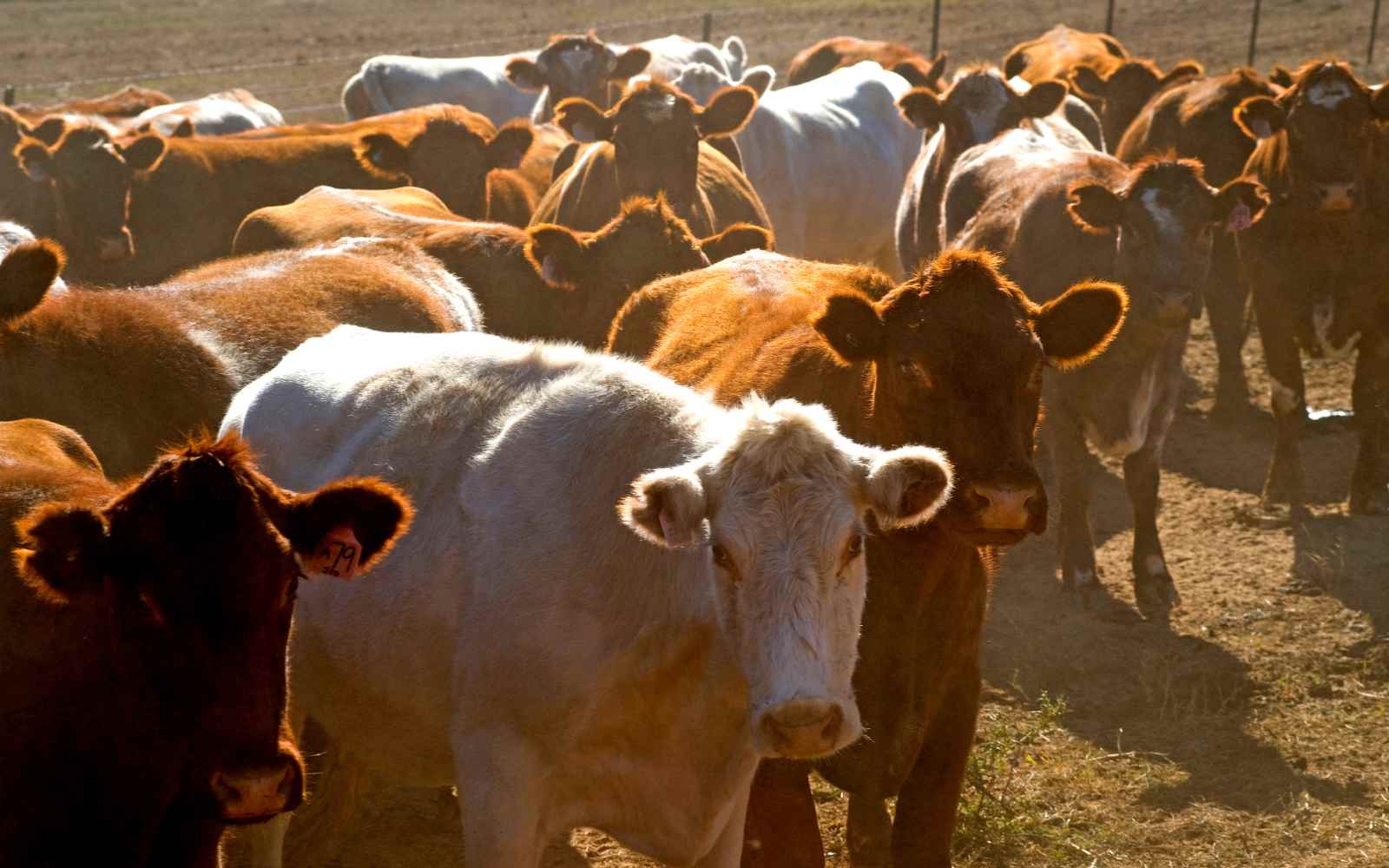
The animal welfare ratings pillar looks at policies that brands have in place to avoid all or some animal-derived products, as well as minimising suffering and tracing animal impacts in their supply chain.
Animal rights policies: vegan fashion
Vegan fashion products contain no animal or animal-derived substances. Many consumers want to know if a brand is entirely vegan, including trims, dyes, and glues.
Common issue: Are you clear about whether you do or don’t use any animal materials?
This is an important issue for many consumers. Clear advice gives those who prefer vegan products the confidence to buy.
Tip: If you do not use animal materials and intend to continue operating in that way, provide a clear statement that you do not use any animal products, or that the brand is vegan. However, before doing so, make sure you examine every element that goes into your products. Dyes used in production, glue in linings, or oil in machinery can come from animal sources. If you only use say, silk, peace silk, or dye from insects, you may wish to state that you use no animal materials other than the relevant specific materials.
Common issue: Should you consider vegan certification?
Tip: If you are 100% confident that your supply chain is free from all animal-derived materials, including dyes, trims, and machine oils, you may wish to become vegan certified.
How to avoid greenwashing: 5 common communication mistakes
It’s essential to be clear and accurate when communicating your sustainability and ethical initiatives. Brands should not present incomplete or greenwashed information because it leads to consumer confusion and mistrust. In this section, we identify common communication mistakes and suggest a better alternative.
- Don’t say: “We use recycled materials wherever possible.”
This sentence is vague. “Wherever possible” could mean a single product or the entire collection. - Do say: “Approximately 40% of our current collection is made from reclaimed materials.”
- Don’t say: “We do our best to minimise textile waste.”
This says nothing about the strategies that you have adopted to achieve your goal, nor what has actually been achieved. - Do say: “We work with our suppliers to reuse or recycle any offcuts. Currently, all reusable offcuts are made into [scrunchies/tote bags], and we ensure all remaining offcuts are either recycled or donated.”
- Don’t say: “We only work with suppliers that meet our ethics.”
That’s great, but what are your ethics? You may have carefully chosen a supplier that meets high standards, but your customers don’t know your criteria or how you ensure they are met. Be precise on both points. - Do say: “We expect all suppliers to comply with the International Labour Organisation (ILO) Standards, including freedom of association; effective recognition of the right to collective bargaining; elimination of forced, compulsory or child labour; and elimination of discrimination in respect of employment. All suppliers must sign our Code of Conduct which addresses each of these standards. If these expectations are not met, we work with the supplier to improve in a short timeframe; failing that, we will terminate the relationship. We visit our factories several times a year to check the workers are working in safe and healthy conditions, and that the supplier is complying with our Code of Conduct.”
- Don’t say: “The majority of our materials are organic.”
A majority can mean 51% to 99%, which is a broad spectrum. State a specific percentage, approximating if necessary. - Do say: “75% of our cotton is GOTS certified organic. 20% of our linen is organic.”
- Don’t say: “All workers in our supply chain are paid fair wages.”
“Fair” is ambiguous. Does it mean workers are paid legal minimum wages? There is often a significant gap between legal minimum wage and a properly calculated living wage. - Do say: “Our knitwear is manufactured by a supplier located in Ha Long City, Vietnam, The supplier pays wages calculated in accordance with the Ankar method recommended by the Global Living Wage Coalition.”
- Do say: “Our products are manufactured in a Cambodian factory that pays 150% of the local minimum wage for garment workers. While this is not a living wage, together with two other brands, we have asked the supplier to set a timeframe to adopt and pay living wages calculated using the Ankar method. All of our cotton (about 70% of the materials across our range) is GOTS certified. GOTS requires facilities further up the supply chain to address living wages. In addition, workers are entitled to additional benefits including healthcare.”
Appendix: Lower impact materials

The following materials are recognised as lower impact. This was initially based on the Made-By research on materials conducted some time ago, and is built upon through our own research.
It’s worth noting that there are scores of new materials claimed to be more sustainable but few have demonstrated their credentials with cradle-to-cradle lifecycle assessments (LCAs). We keep this list under review and add materials from time to time as we become aware of satisfactory LCAs or other robust research.
Tier 1
- Recycled cotton
- Recycled wool
- Organic hemp
- Organic linen
Tier 2
- Organic cotton
- Recycled nylon
- Tencel Lyocell
- Monocel
- Other recycled materials
Tier 3
- Linen
- Hemp
- Ramie
- Fairmined Certified Ecological Gold PLA
- Lenzing (“Tencel”) Modal
- EcoVero
- Recycled polyester
Tier 4
- BCI cotton
- Cotton Made in Africa
